Презентация ecological problems 1

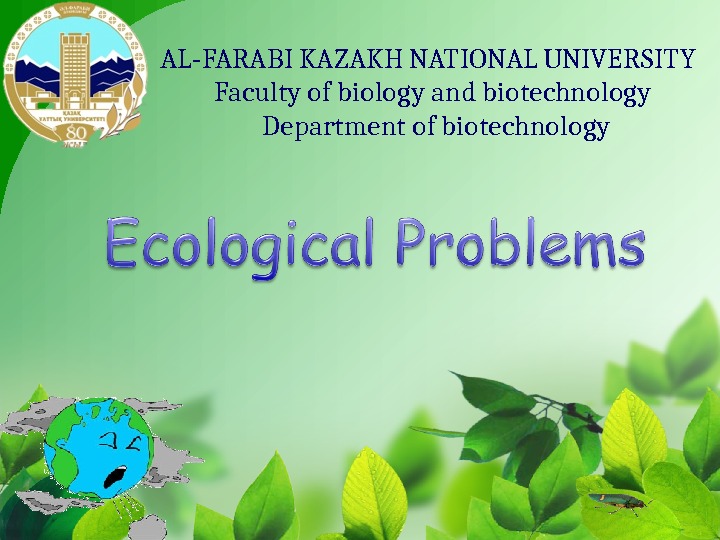
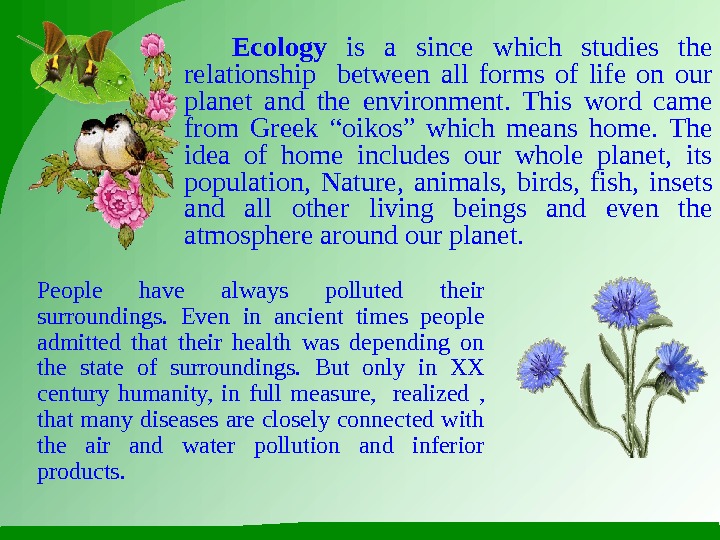


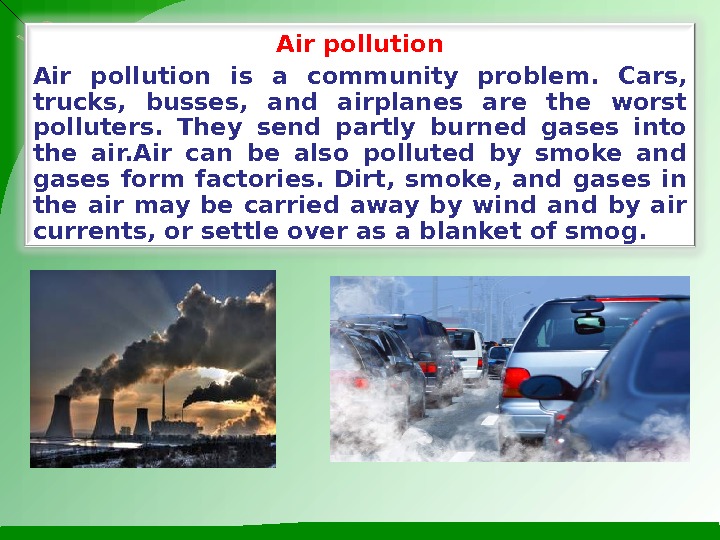
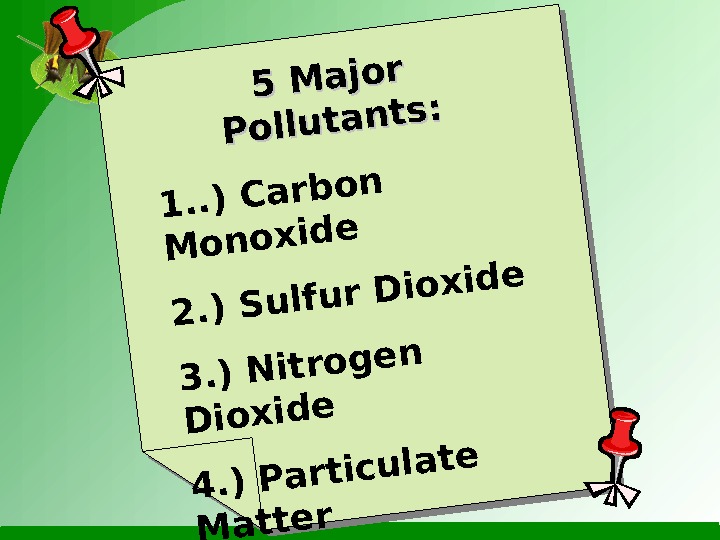

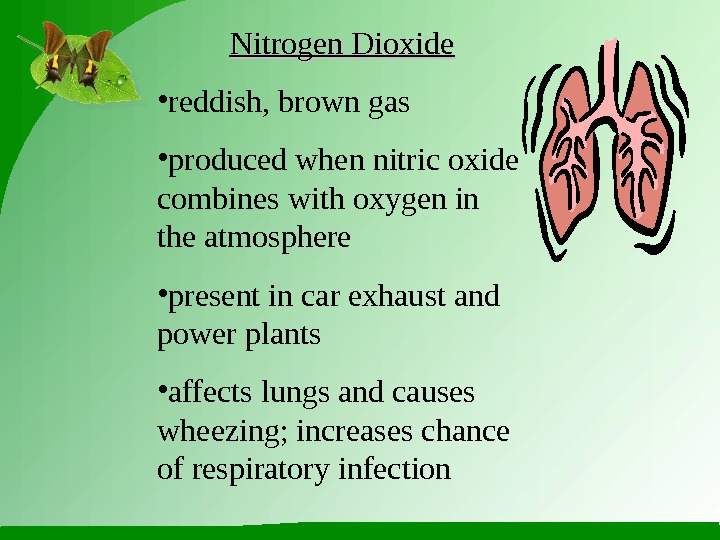
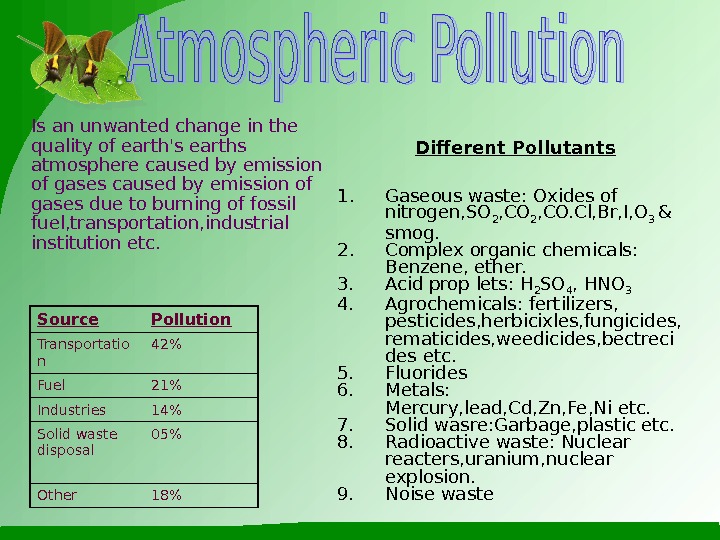
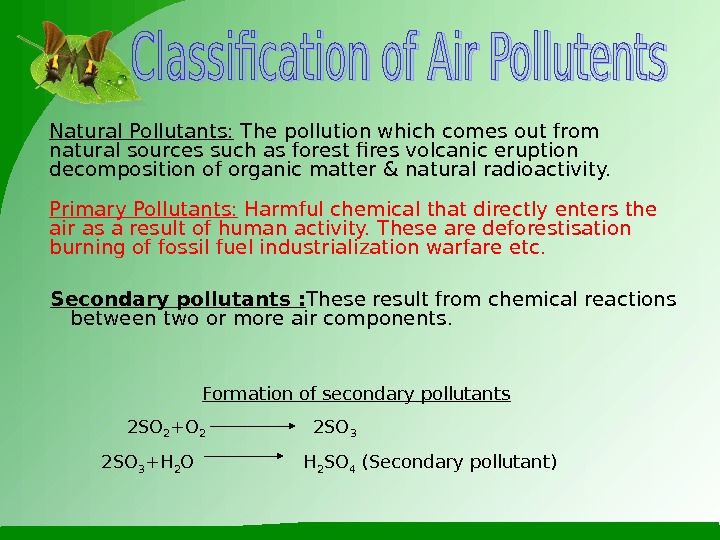
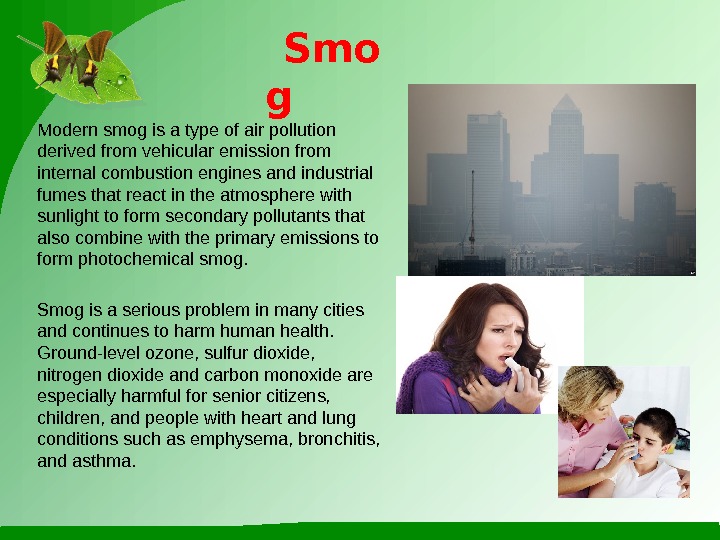
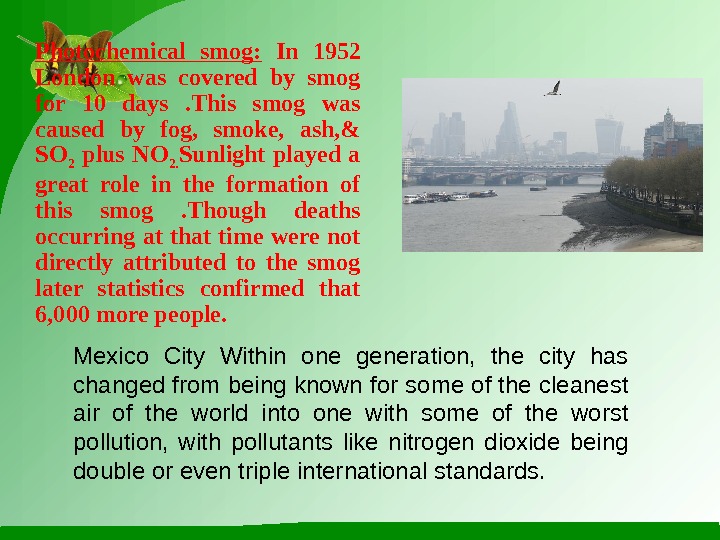
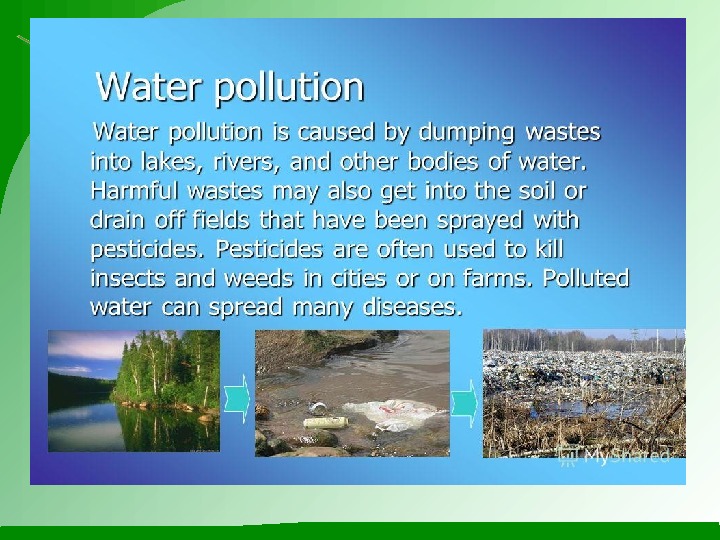

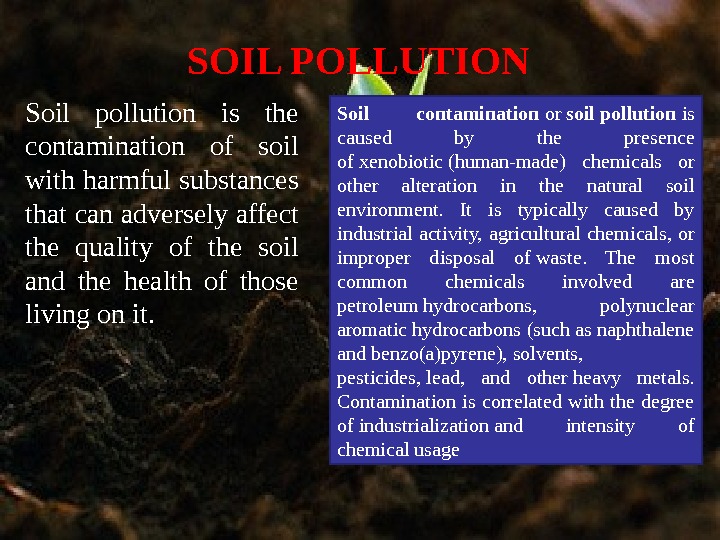
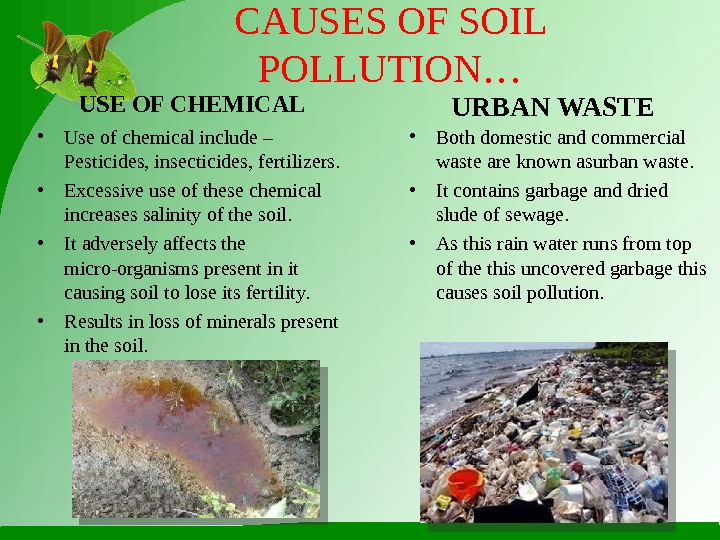
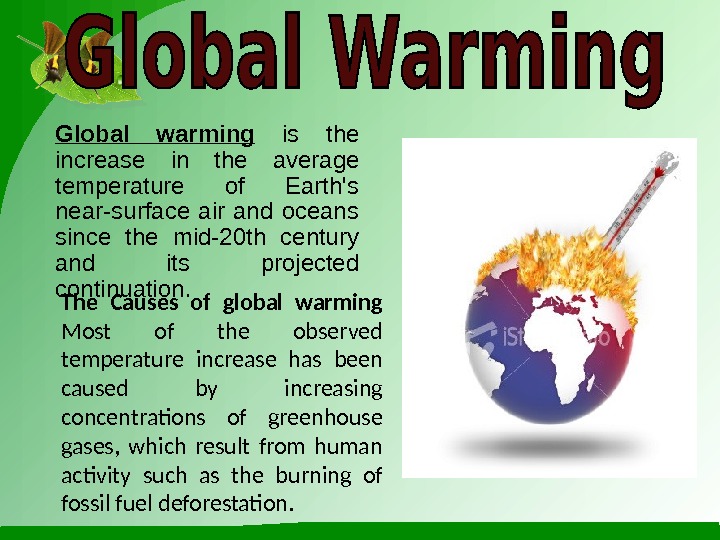
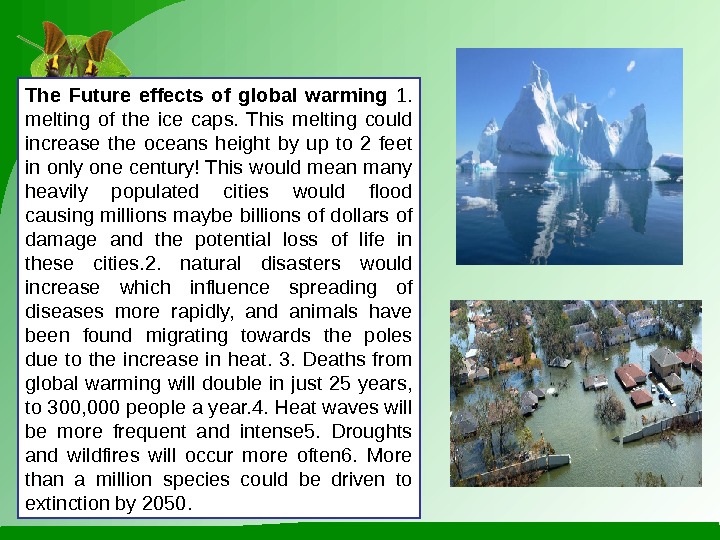
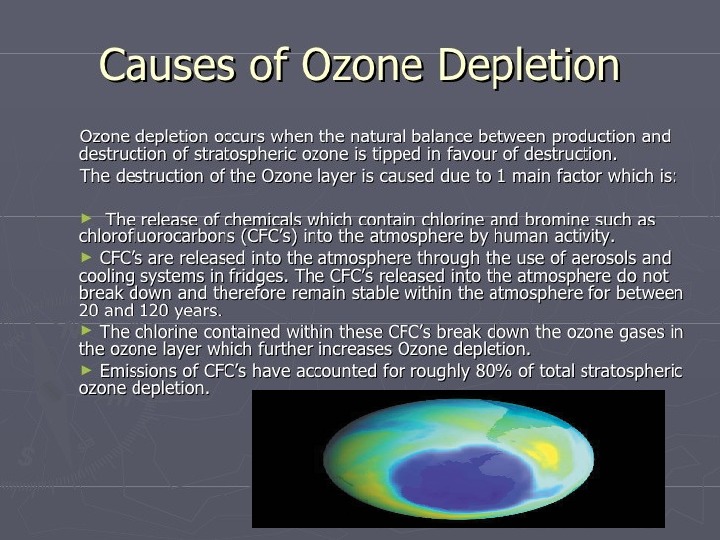
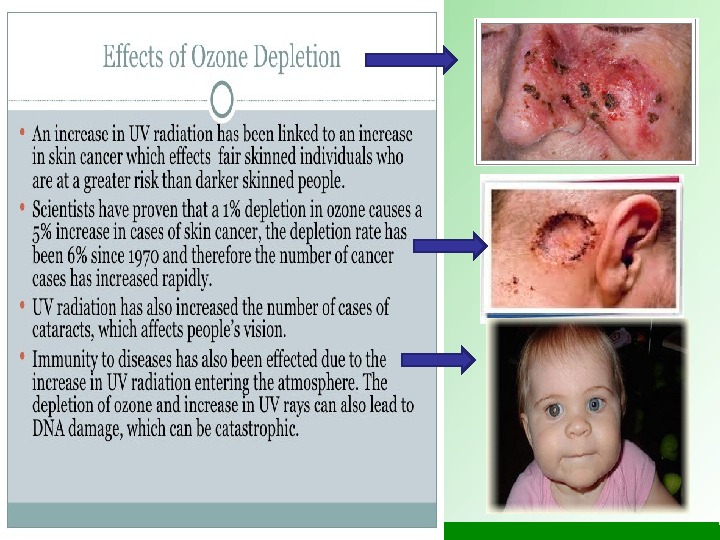
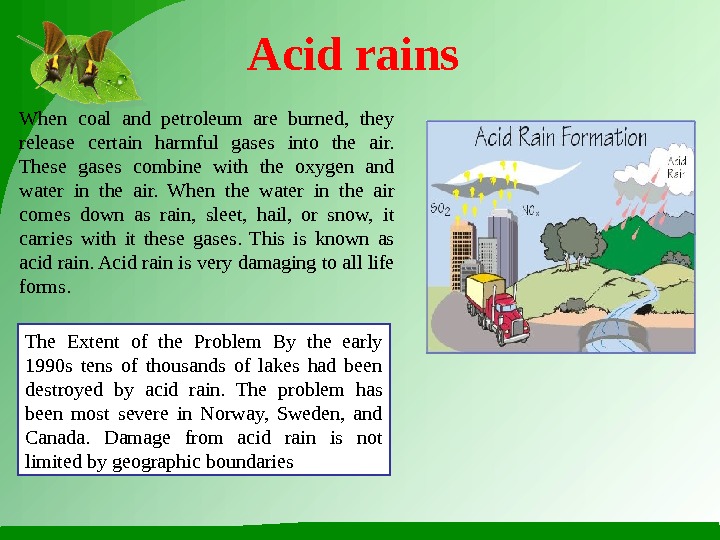
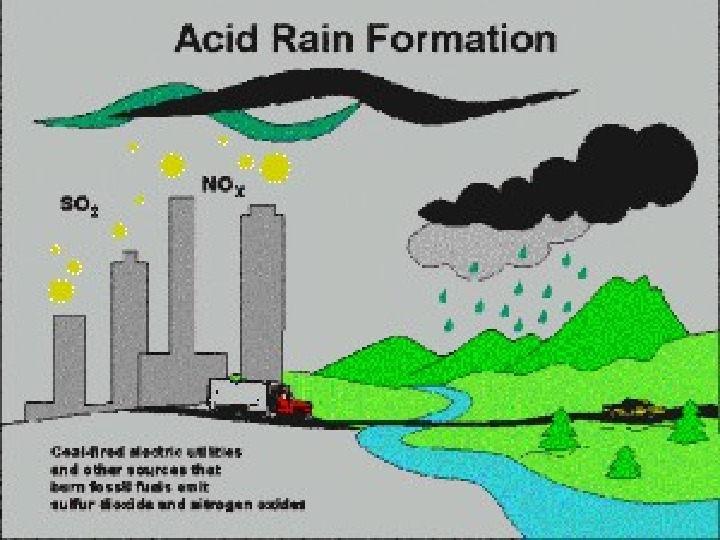
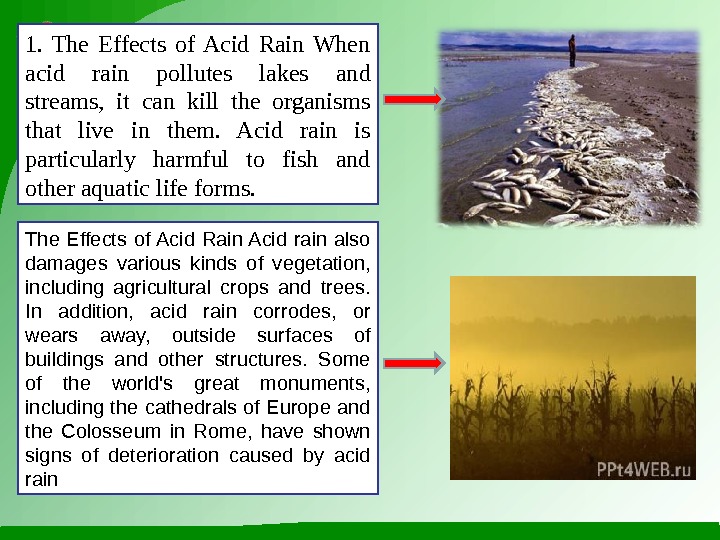
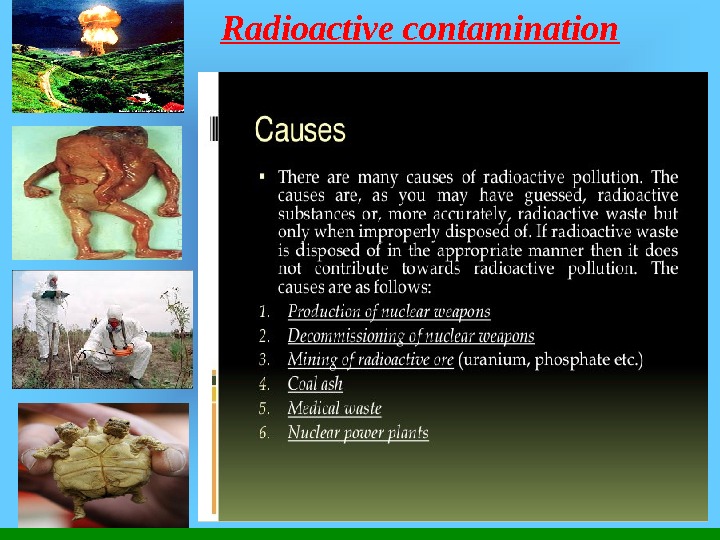
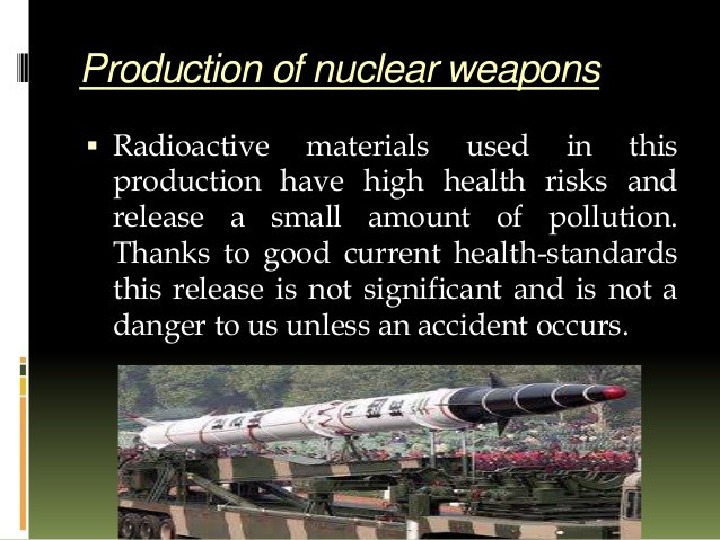
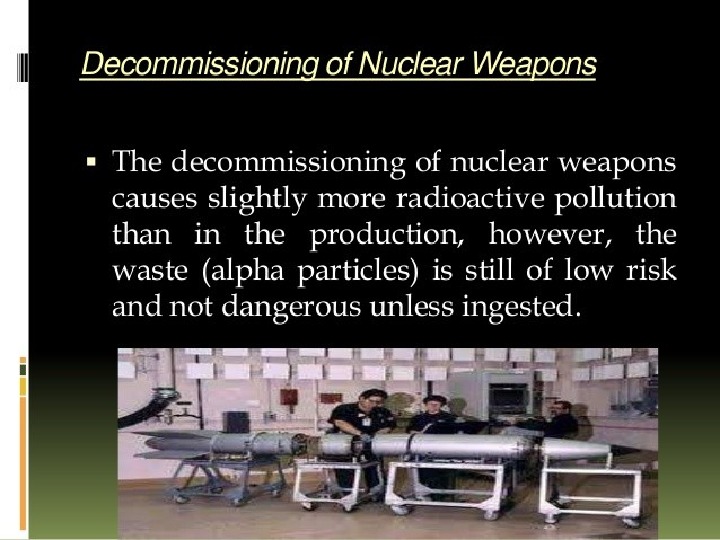

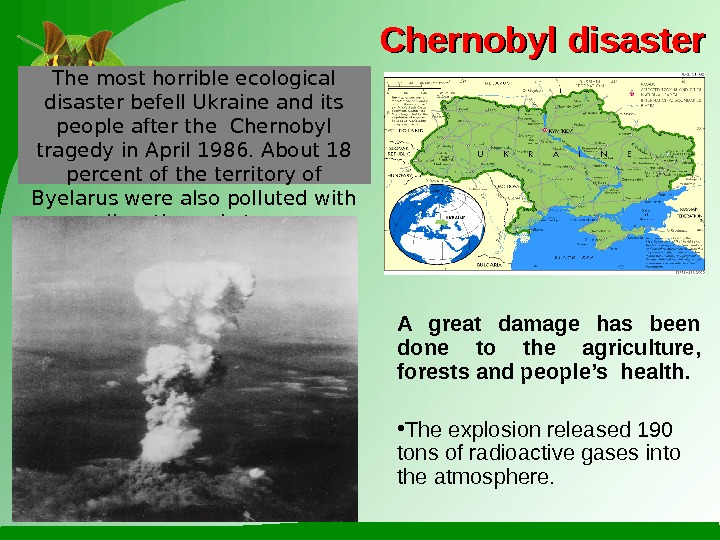
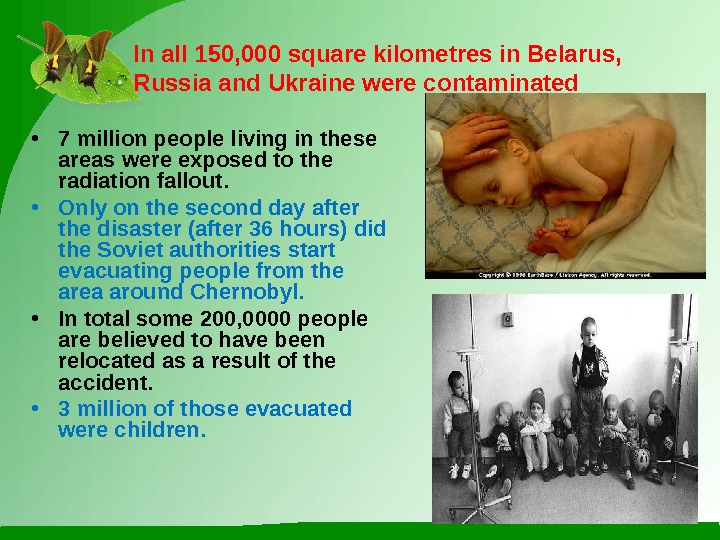

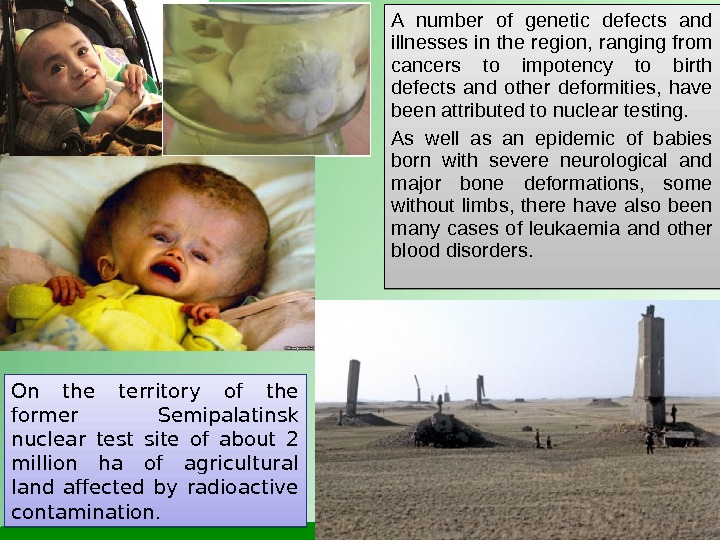
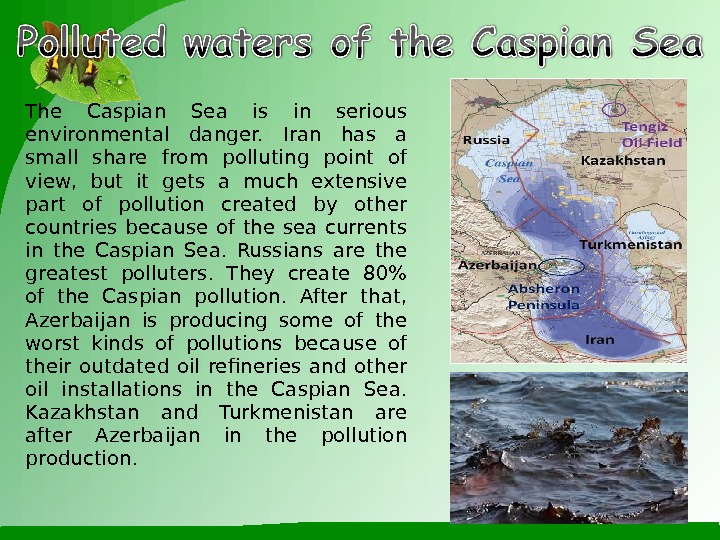
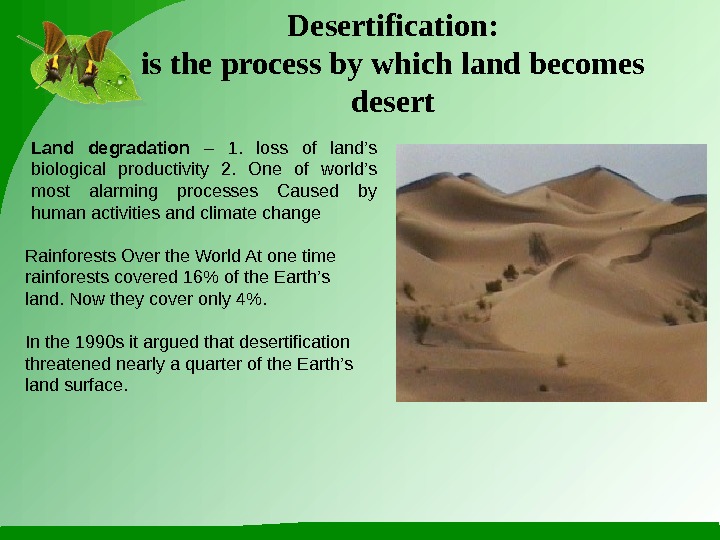
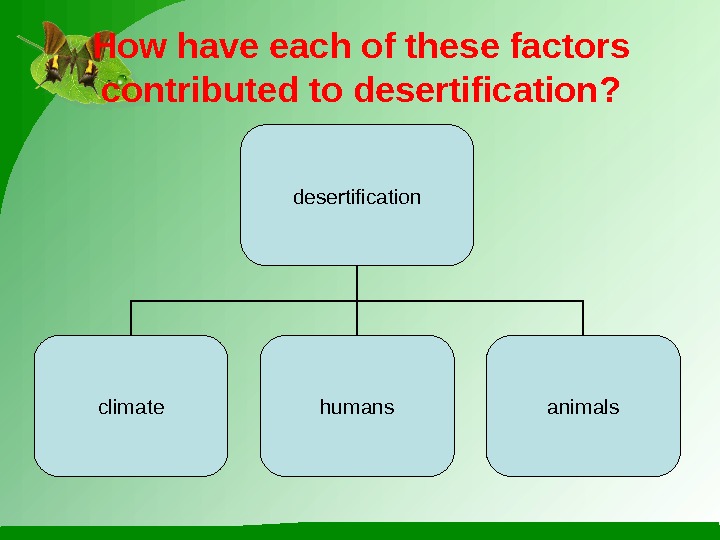
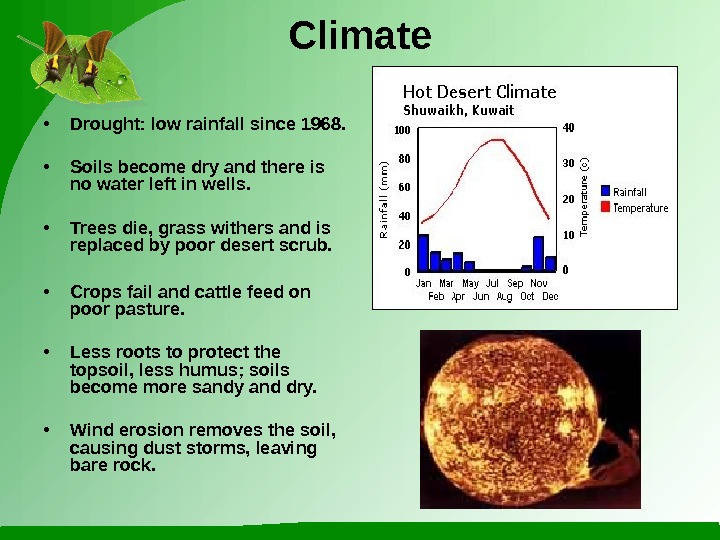

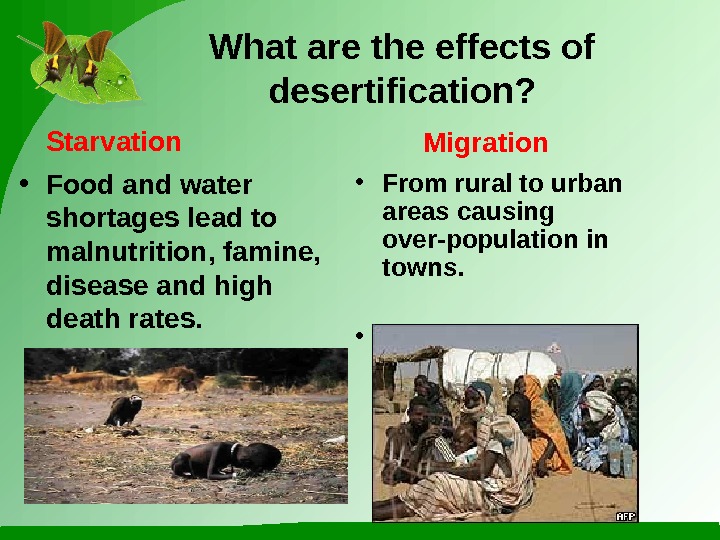
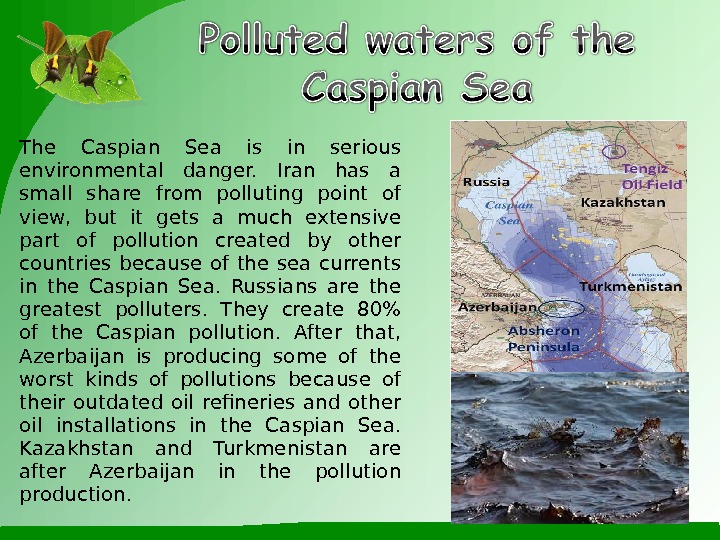
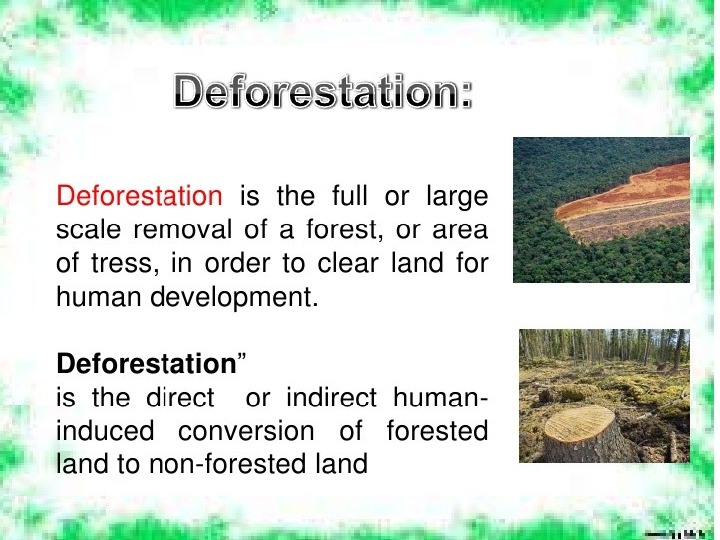
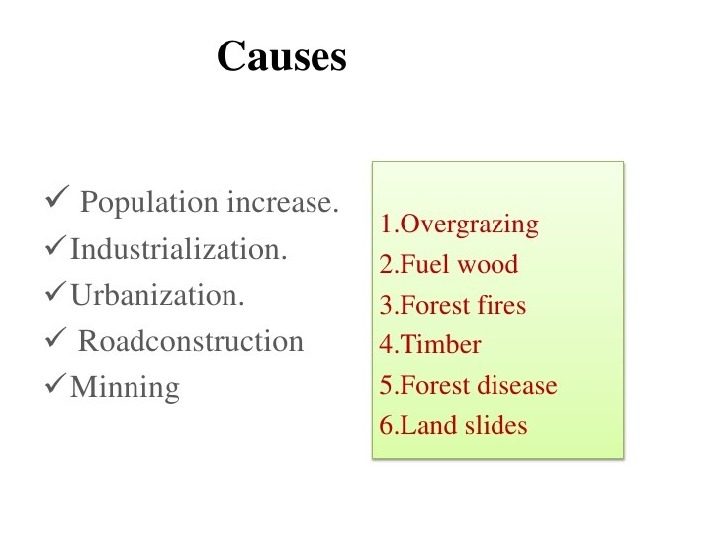

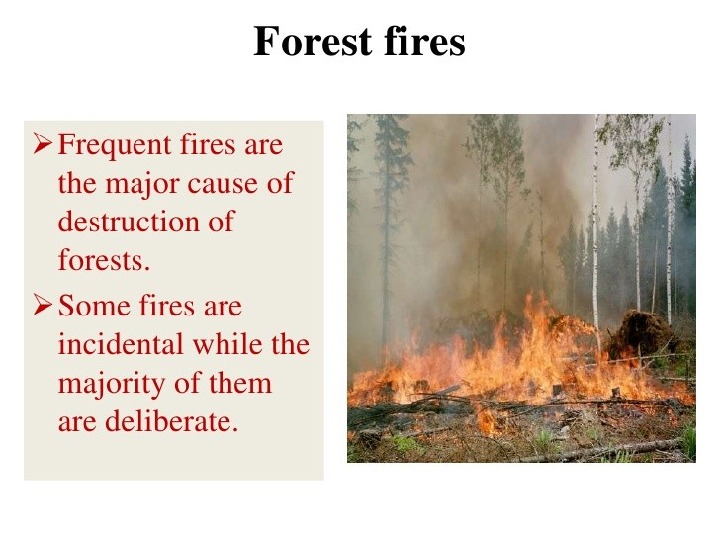
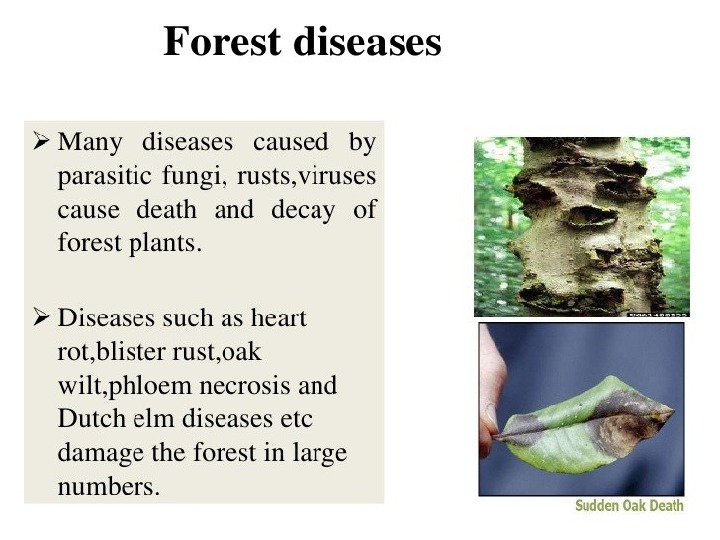

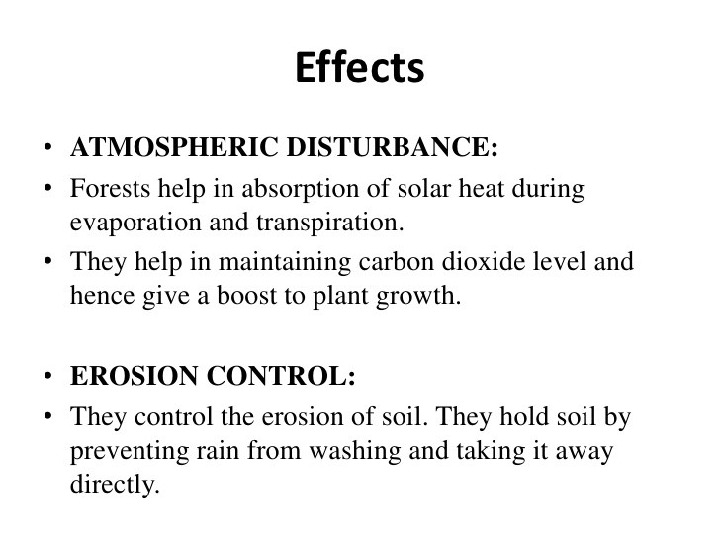

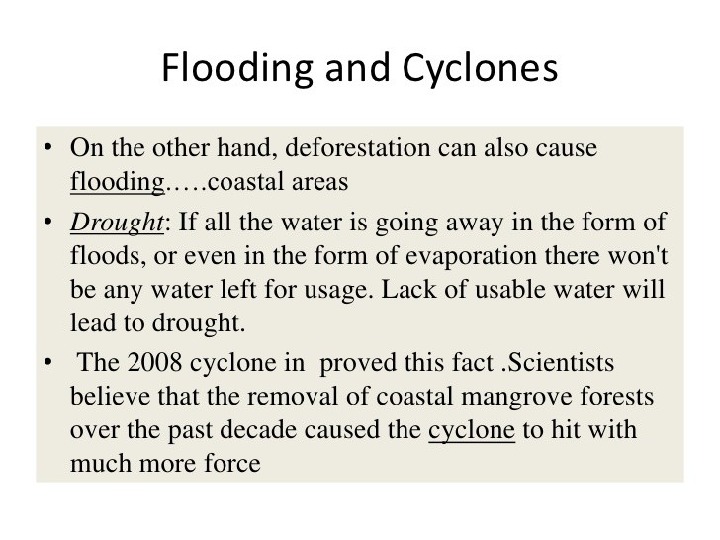
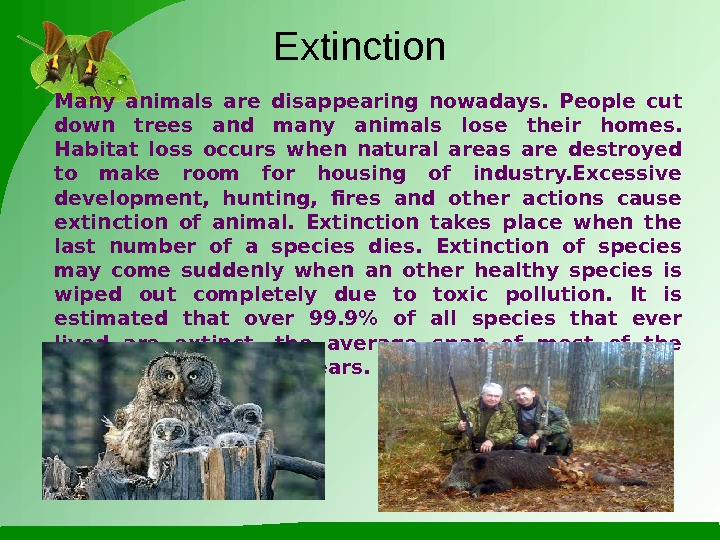
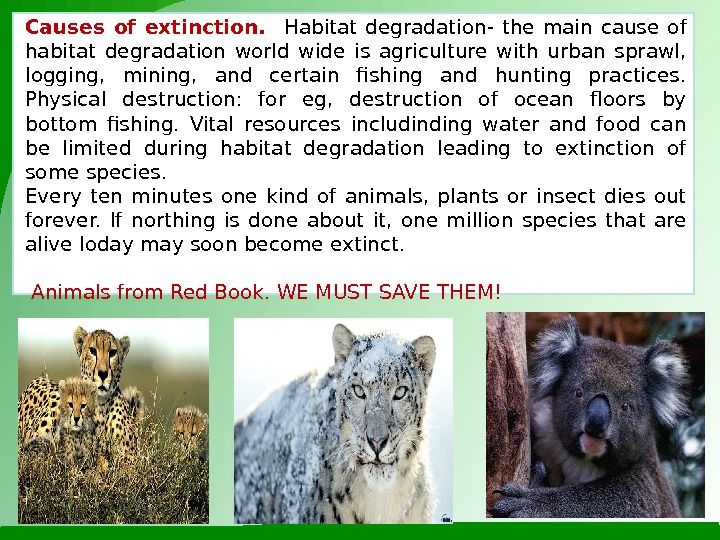
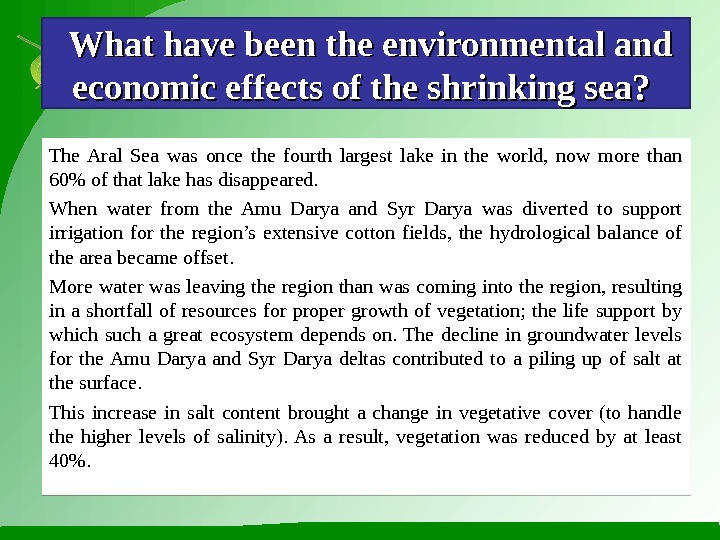

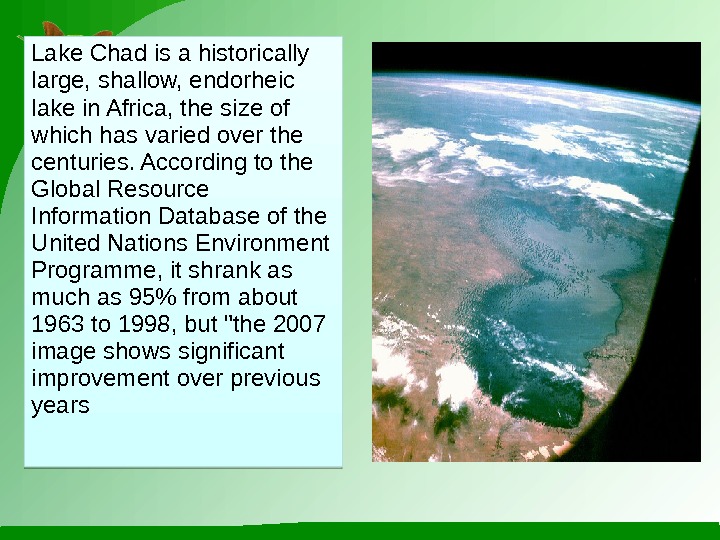
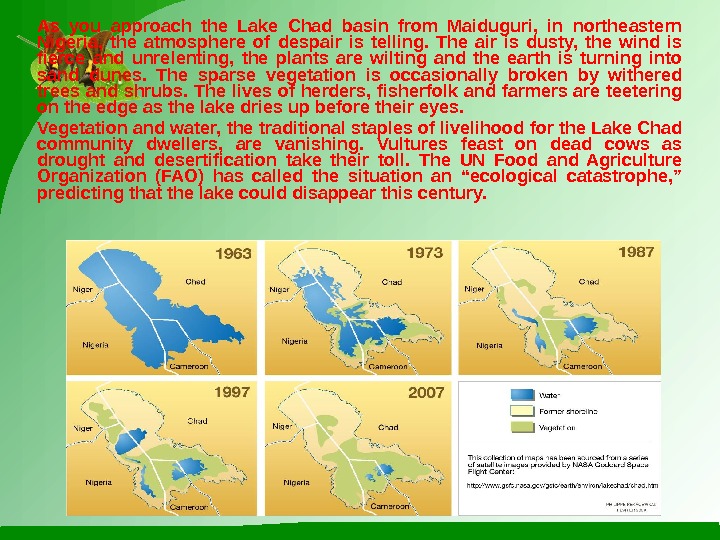


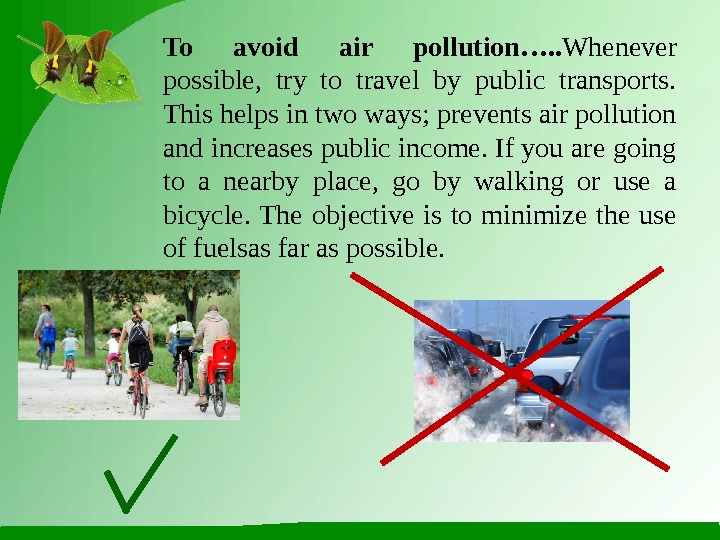
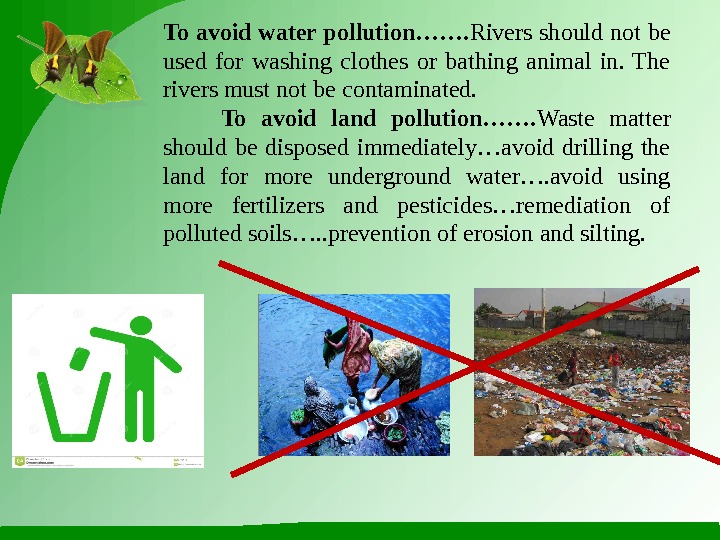

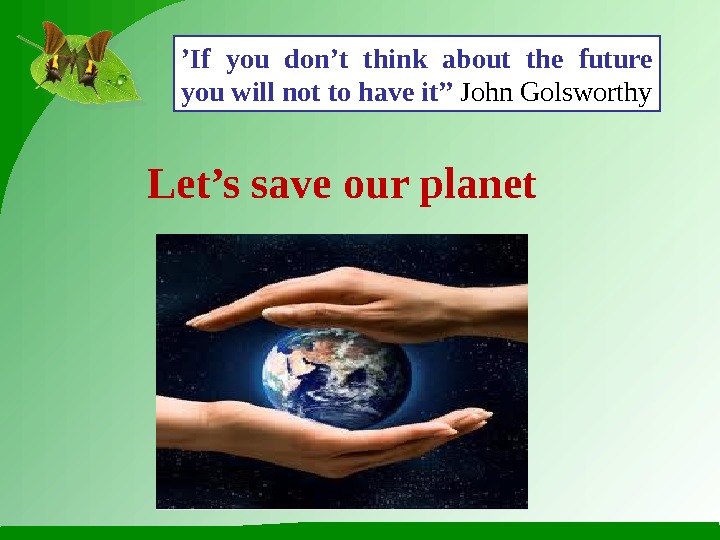
- Размер: 9.7 Mегабайта
- Количество слайдов: 59
Описание презентации Презентация ecological problems 1 по слайдам
 AL-FARABI KAZAKH NATIONAL UNIVERSITY Faculty of biology and biotechnology Department of biotechnology
AL-FARABI KAZAKH NATIONAL UNIVERSITY Faculty of biology and biotechnology Department of biotechnology
 Ecology is a since which studies the relationship between all forms of life on our planet and the environment. This word came from Greek “oikos” which means home. The idea of home includes our whole planet, its population, Nature, animals, birds, fish, insets and all other living beings and even the atmosphere around our planet. People have always polluted their surroundings. Even in ancient times people admitted that their health was depending on the state of surroundings. But only in XX century humanity, in full measure, realized , that many diseases are closely connected with the air and water pollution and inferior products.
Ecology is a since which studies the relationship between all forms of life on our planet and the environment. This word came from Greek “oikos” which means home. The idea of home includes our whole planet, its population, Nature, animals, birds, fish, insets and all other living beings and even the atmosphere around our planet. People have always polluted their surroundings. Even in ancient times people admitted that their health was depending on the state of surroundings. But only in XX century humanity, in full measure, realized , that many diseases are closely connected with the air and water pollution and inferior products.
 • Since ancient times Nature has served Man giving everything he needs: air to breathe, food to eat, water to drink, wood for building and fuel for heating his home. For thousands of years people lived in harmony with the environment and it seemed to them that the resources of nature had no end or limit. With the industrial revolution our negative influence on Nature began to increase. Large cities with thousands of steaming, polluting plants and factories can be found nowadays all over the world. The by-products of their activity pollute the air we breathe water we drink the fields where our crops are grown.
• Since ancient times Nature has served Man giving everything he needs: air to breathe, food to eat, water to drink, wood for building and fuel for heating his home. For thousands of years people lived in harmony with the environment and it seemed to them that the resources of nature had no end or limit. With the industrial revolution our negative influence on Nature began to increase. Large cities with thousands of steaming, polluting plants and factories can be found nowadays all over the world. The by-products of their activity pollute the air we breathe water we drink the fields where our crops are grown.
 Major current environmental issues Air pollution Radiation pollution. Global warming Radioctive contamina tion Ozone layer Water pollution Acid rain Soil pollutiondeforest ation desertifica tion
Major current environmental issues Air pollution Radiation pollution. Global warming Radioctive contamina tion Ozone layer Water pollution Acid rain Soil pollutiondeforest ation desertifica tion
 Air pollution is a community problem. Cars, trucks, busses, and airplanes are the worst polluters. They send partly burned gases into the air. Air can be also polluted by smoke and gases form factories. Dirt, smoke, and gases in the air may be carried away by wind and by air currents, or settle over as a blanket of smog.
Air pollution is a community problem. Cars, trucks, busses, and airplanes are the worst polluters. They send partly burned gases into the air. Air can be also polluted by smoke and gases form factories. Dirt, smoke, and gases in the air may be carried away by wind and by air currents, or settle over as a blanket of smog.
 5 Major Pollutants: 1. . ) Carbon Monoxide 2. ) Sulfur Dioxide 3. ) Nitrogen Dioxide 4. ) Particulate Matter 5. ) Ground Level Ozone
5 Major Pollutants: 1. . ) Carbon Monoxide 2. ) Sulfur Dioxide 3. ) Nitrogen Dioxide 4. ) Particulate Matter 5. ) Ground Level Ozone
 Carbon Monoxide • produced when carbon does not burn in fossil fuels • present in car exhaust • deprives body of O 2 causing headaches, fatigue, and impaired vision Sulfur Dioxide • produced when coal and fuel oil are burned • present in power plant exhaust • narrows the airway, causing wheezing and shortness of breath, especially in those with asthma
Carbon Monoxide • produced when carbon does not burn in fossil fuels • present in car exhaust • deprives body of O 2 causing headaches, fatigue, and impaired vision Sulfur Dioxide • produced when coal and fuel oil are burned • present in power plant exhaust • narrows the airway, causing wheezing and shortness of breath, especially in those with asthma
 Nitrogen Dioxide • reddish, brown gas • produced when nitric oxide combines with oxygen in the atmosphere • present in car exhaust and power plants • affects lungs and causes wheezing; increases chance of respiratory infection
Nitrogen Dioxide • reddish, brown gas • produced when nitric oxide combines with oxygen in the atmosphere • present in car exhaust and power plants • affects lungs and causes wheezing; increases chance of respiratory infection
 Is an unwanted change in the quality of earth’s earths atmosphere caused by emission of gases due to burning of fossil fuel, transportation, industrial institution etc. Source Pollution Transportatio n 42% Fuel 21% Industries 14% Solid waste disposal 05% Other 18% 1. Gaseous waste: Oxides of nitrogen, SO 2 , CO. Cl, Br, I, O 3 & smog. 2. Complex organic chemicals: Benzene, ether. 3. Acid prop lets: H 2 SO 4 , HNO 3 4. Agrochemicals: fertilizers, pesticides, herbicixles, fungicides, rematicides, weedicides, bectreci des etc. 5. Fluorides 6. Metals: Mercury, lead, Cd, Zn, Fe, Ni etc. 7. Solid wasre: Garbage, plastic etc. 8. Radioactive waste: Nuclear reacters, uranium, nuclear explosion. 9. Noise waste Different Pollutants
Is an unwanted change in the quality of earth’s earths atmosphere caused by emission of gases due to burning of fossil fuel, transportation, industrial institution etc. Source Pollution Transportatio n 42% Fuel 21% Industries 14% Solid waste disposal 05% Other 18% 1. Gaseous waste: Oxides of nitrogen, SO 2 , CO. Cl, Br, I, O 3 & smog. 2. Complex organic chemicals: Benzene, ether. 3. Acid prop lets: H 2 SO 4 , HNO 3 4. Agrochemicals: fertilizers, pesticides, herbicixles, fungicides, rematicides, weedicides, bectreci des etc. 5. Fluorides 6. Metals: Mercury, lead, Cd, Zn, Fe, Ni etc. 7. Solid wasre: Garbage, plastic etc. 8. Radioactive waste: Nuclear reacters, uranium, nuclear explosion. 9. Noise waste Different Pollutants
 Natural Pollutants: The pollution which comes out from natural sources such as forest fires volcanic eruption decomposition of organic matter & natural radioactivity. Primary Pollutants: Harmful chemical that directly enters the air as a result of human activity. These are deforestisation burning of fossil fuel industrialization warfare etc. Secondary pollutants : These result from chemical reactions between two or more air components. Formation of secondary pollutants 2 SO 2 +O 2 2 SO 3 +H 2 O H 2 SO 4 (Secondary pollutant)
Natural Pollutants: The pollution which comes out from natural sources such as forest fires volcanic eruption decomposition of organic matter & natural radioactivity. Primary Pollutants: Harmful chemical that directly enters the air as a result of human activity. These are deforestisation burning of fossil fuel industrialization warfare etc. Secondary pollutants : These result from chemical reactions between two or more air components. Formation of secondary pollutants 2 SO 2 +O 2 2 SO 3 +H 2 O H 2 SO 4 (Secondary pollutant)
 Modern smog is a type of air pollution derived from vehicular emission from internal combustion engines and industrial fumes that react in the atmosphere with sunlight to form secondary pollutants that also combine with the primary emissions to form photochemical smog. Smo g Smog is a serious problem in many cities and continues to harm human health. Ground-level ozone, sulfur dioxide, nitrogen dioxide and carbon monoxide are especially harmful for senior citizens, children, and people with heart and lung conditions such as emphysema, bronchitis, and asthma.
Modern smog is a type of air pollution derived from vehicular emission from internal combustion engines and industrial fumes that react in the atmosphere with sunlight to form secondary pollutants that also combine with the primary emissions to form photochemical smog. Smo g Smog is a serious problem in many cities and continues to harm human health. Ground-level ozone, sulfur dioxide, nitrogen dioxide and carbon monoxide are especially harmful for senior citizens, children, and people with heart and lung conditions such as emphysema, bronchitis, and asthma.
 Photochemical smog: In 1952 London was covered by smog for 10 days . This smog was caused by fog, smoke, ash, & SO 2 plus NO 2. Sunlight played a great role in the formation of this smog . Though deaths occurring at that time were not directly attributed to the smog later statistics confirmed that 6, 000 more people. Mexico City Within one generation, the city has changed from being known for some of the cleanest air of the world into one with some of the worst pollution, with pollutants like nitrogen dioxide being double or even triple international standards.
Photochemical smog: In 1952 London was covered by smog for 10 days . This smog was caused by fog, smoke, ash, & SO 2 plus NO 2. Sunlight played a great role in the formation of this smog . Though deaths occurring at that time were not directly attributed to the smog later statistics confirmed that 6, 000 more people. Mexico City Within one generation, the city has changed from being known for some of the cleanest air of the world into one with some of the worst pollution, with pollutants like nitrogen dioxide being double or even triple international standards.


 Soil pollution is the contamination of soil with harmful substances that can adversely affect the quality of the soil and the health of those living on it. SOIL POLLUTION Soil pollution is the contamination of soil with harmful substances that can adversely affect the quality of the soil and the health of those living on it. Soil contamination or soil pollution is caused by the presence of xenobiotic (human-made) chemicals or other alteration in the natural soil environment. It is typically caused by industrial activity, agricultural chemicals, or improper disposal of waste. The most common chemicals involved are petroleum hydrocarbons, polynuclear aromatic hydrocarbons (such as naphthalene and benzo(a)pyrene), solvents, pesticides, lead, and other heavy metals. Contamination is correlated with the degree of industrialization and intensity of chemical usage
Soil pollution is the contamination of soil with harmful substances that can adversely affect the quality of the soil and the health of those living on it. SOIL POLLUTION Soil pollution is the contamination of soil with harmful substances that can adversely affect the quality of the soil and the health of those living on it. Soil contamination or soil pollution is caused by the presence of xenobiotic (human-made) chemicals or other alteration in the natural soil environment. It is typically caused by industrial activity, agricultural chemicals, or improper disposal of waste. The most common chemicals involved are petroleum hydrocarbons, polynuclear aromatic hydrocarbons (such as naphthalene and benzo(a)pyrene), solvents, pesticides, lead, and other heavy metals. Contamination is correlated with the degree of industrialization and intensity of chemical usage
 CAUSES OF SOIL POLLUTION… • Use of chemical include – Pesticides, insecticides, fertilizers. • Excessive use of these chemical increases salinity of the soil. • It adversely affects the micro-organisms present in it causing soil to lose its fertility. • Results in loss of minerals present in the soil. • Both domestic and commercial waste are known asurban waste. • It contains garbage and dried slude of sewage. • As this rain water runs from top of the this uncovered garbage this causes soil pollution. USE OF CHEMICAL URBAN WAST
CAUSES OF SOIL POLLUTION… • Use of chemical include – Pesticides, insecticides, fertilizers. • Excessive use of these chemical increases salinity of the soil. • It adversely affects the micro-organisms present in it causing soil to lose its fertility. • Results in loss of minerals present in the soil. • Both domestic and commercial waste are known asurban waste. • It contains garbage and dried slude of sewage. • As this rain water runs from top of the this uncovered garbage this causes soil pollution. USE OF CHEMICAL URBAN WAST
 Global warming is the increase in the average temperature of Earth’s near-surface air and oceans since the mid-20 th century and its projected continuatio n. The Causes of global warming Most of the observed temperature increase has been caused by increasing concentrations of greenhouse gases, which result from human activity such as the burning of fossil fuel deforestation.
Global warming is the increase in the average temperature of Earth’s near-surface air and oceans since the mid-20 th century and its projected continuatio n. The Causes of global warming Most of the observed temperature increase has been caused by increasing concentrations of greenhouse gases, which result from human activity such as the burning of fossil fuel deforestation.
 The Future effects of global warming 1. melting of the ice caps. This melting could increase the oceans height by up to 2 feet in only one century! This would mean many heavily populated cities would flood causing millions maybe billions of dollars of damage and the potential loss of life in these cities. 2. natural disasters would increase which influence spreading of diseases more rapidly, and animals have been found migrating towards the poles due to the increase in heat. 3. Deaths from global warming will double in just 25 years, to 300, 000 people a year. 4. Heat waves will be more frequent and intense 5. Droughts and wildfires will occur more often 6. More than a million species could be driven to extinction by 2050.
The Future effects of global warming 1. melting of the ice caps. This melting could increase the oceans height by up to 2 feet in only one century! This would mean many heavily populated cities would flood causing millions maybe billions of dollars of damage and the potential loss of life in these cities. 2. natural disasters would increase which influence spreading of diseases more rapidly, and animals have been found migrating towards the poles due to the increase in heat. 3. Deaths from global warming will double in just 25 years, to 300, 000 people a year. 4. Heat waves will be more frequent and intense 5. Droughts and wildfires will occur more often 6. More than a million species could be driven to extinction by 2050.


 When coal and petroleum are burned, they release certain harmful gases into the air. These gases combine with the oxygen and water in the air. When the water in the air comes down as rain, sleet, hail, or snow, it carries with it these gases. This is known as acid rain. Acid rain is very damaging to all life forms. Acid rains The Extent of the Problem By the early 1990 s tens of thousands of lakes had been destroyed by acid rain. The problem has been most severe in Norway, Sweden, and Canada. Damage from acid rain is not limited by geographic boundaries
When coal and petroleum are burned, they release certain harmful gases into the air. These gases combine with the oxygen and water in the air. When the water in the air comes down as rain, sleet, hail, or snow, it carries with it these gases. This is known as acid rain. Acid rain is very damaging to all life forms. Acid rains The Extent of the Problem By the early 1990 s tens of thousands of lakes had been destroyed by acid rain. The problem has been most severe in Norway, Sweden, and Canada. Damage from acid rain is not limited by geographic boundaries

 1. The Effects of Acid Rain When acid rain pollutes lakes and streams, it can kill the organisms that live in them. Acid rain is particularly harmful to fish and other aquatic life forms. The Effects of Acid Rain Acid rain also damages various kinds of vegetation, including agricultural crops and trees. In addition, acid rain corrodes, or wears away, outside surfaces of buildings and other structures. Some of the world’s great monuments, including the cathedrals of Europe and the Colosseum in Rome, have shown signs of deterioration caused by acid rain
1. The Effects of Acid Rain When acid rain pollutes lakes and streams, it can kill the organisms that live in them. Acid rain is particularly harmful to fish and other aquatic life forms. The Effects of Acid Rain Acid rain also damages various kinds of vegetation, including agricultural crops and trees. In addition, acid rain corrodes, or wears away, outside surfaces of buildings and other structures. Some of the world’s great monuments, including the cathedrals of Europe and the Colosseum in Rome, have shown signs of deterioration caused by acid rain
 Radioactive contamination — the most dangerous form of physical pollution associated with human exposure to other types of organisms radiation. This type of pollution in our country and in other CIS countries is in second place after chemical contamination. For radiation contamination include: — The actual radioactive contamination, which refers to the physical pollution associated with the action of the alpha and beta particles and gamma radiation resulting from the decay of radioactive substances — Environmental contamination by radioactive substances, ie, essentially chemical pollution associated with excess levels of natural (natural background) of radioactive substances in the environment. Radioactive contamination
Radioactive contamination — the most dangerous form of physical pollution associated with human exposure to other types of organisms radiation. This type of pollution in our country and in other CIS countries is in second place after chemical contamination. For radiation contamination include: — The actual radioactive contamination, which refers to the physical pollution associated with the action of the alpha and beta particles and gamma radiation resulting from the decay of radioactive substances — Environmental contamination by radioactive substances, ie, essentially chemical pollution associated with excess levels of natural (natural background) of radioactive substances in the environment. Radioactive contamination


 Effects On Human Beings. ► The impact of radioactive pollution on human beings can vary from mild to fatal; the magnitude of the adverse effects largely depends on the level and duration of exposure to radioactivity. Low levels of localized exposure may only have a superficial effect and cause mild skin irritation. ► Long-term exposure or exposure to high amounts of radiation can have far more serious health effects. Radioactive rays can cause irreparable damage to DNA molecules and can lead to a life-threatening condition. The rapidly growing/dividing cells, like those of the skin, bone marrow, are more sensitive towards radioactive emissions. On the other hand, cells that do not undergo rapid cell division, such as bone cells and nervous cells, aren’t damaged so easily. Skin cancer, lung cancer and thyroid cancer are some of the common types of cancers caused by radiation effect.
Effects On Human Beings. ► The impact of radioactive pollution on human beings can vary from mild to fatal; the magnitude of the adverse effects largely depends on the level and duration of exposure to radioactivity. Low levels of localized exposure may only have a superficial effect and cause mild skin irritation. ► Long-term exposure or exposure to high amounts of radiation can have far more serious health effects. Radioactive rays can cause irreparable damage to DNA molecules and can lead to a life-threatening condition. The rapidly growing/dividing cells, like those of the skin, bone marrow, are more sensitive towards radioactive emissions. On the other hand, cells that do not undergo rapid cell division, such as bone cells and nervous cells, aren’t damaged so easily. Skin cancer, lung cancer and thyroid cancer are some of the common types of cancers caused by radiation effect.
 Chernobyl disaster The most horrible ecological disaster befell Ukraine and its people after the Chernobyl tragedy in April 1986. About 18 percent of the territory of Byelarus were also polluted with radioactive substances A great damage has been done to the agriculture, forests and people’s health. • The explosion released 190 tons of radioactive gases into the atmosphere.
Chernobyl disaster The most horrible ecological disaster befell Ukraine and its people after the Chernobyl tragedy in April 1986. About 18 percent of the territory of Byelarus were also polluted with radioactive substances A great damage has been done to the agriculture, forests and people’s health. • The explosion released 190 tons of radioactive gases into the atmosphere.
 In all 150, 000 square kilometres in Belarus, Russia and Ukraine were contaminated • 7 million people living in these areas were exposed to the radiation fallout. • Only on the second day after the disaster (after 36 hours) did the Soviet authorities start evacuating people from the area around Chernobyl. • In total some 200, 0000 people are believed to have been relocated as a result of the accident. • 3 million of those evacuated were children.
In all 150, 000 square kilometres in Belarus, Russia and Ukraine were contaminated • 7 million people living in these areas were exposed to the radiation fallout. • Only on the second day after the disaster (after 36 hours) did the Soviet authorities start evacuating people from the area around Chernobyl. • In total some 200, 0000 people are believed to have been relocated as a result of the accident. • 3 million of those evacuated were children.

 A number of genetic defects and illnesses in the region, ranging from cancers to impotency to birth defects and other deformities, have been attributed to nuclear testing. As well as an epidemic of babies born with severe neurological and major bone deformations, some without limbs, there have also been many cases of leukaemia and other blood disorders. On the territory of the former Semipalatinsk nuclear test site of about 2 million ha of agricultural land affected by radioactive contamination.
A number of genetic defects and illnesses in the region, ranging from cancers to impotency to birth defects and other deformities, have been attributed to nuclear testing. As well as an epidemic of babies born with severe neurological and major bone deformations, some without limbs, there have also been many cases of leukaemia and other blood disorders. On the territory of the former Semipalatinsk nuclear test site of about 2 million ha of agricultural land affected by radioactive contamination.
 The Caspian Sea is in serious environmental danger. Iran has a small share from polluting point of view, but it gets a much extensive part of pollution created by other countries because of the sea currents in the Caspian Sea. Russians are the greatest polluters. They create 80% of the Caspian pollution. After that, Azerbaijan is producing some of the worst kinds of pollutions because of their outdated oil refineries and other oil installations in the Caspian Sea. Kazakhstan and Turkmenistan are after Azerbaijan in the pollution production.
The Caspian Sea is in serious environmental danger. Iran has a small share from polluting point of view, but it gets a much extensive part of pollution created by other countries because of the sea currents in the Caspian Sea. Russians are the greatest polluters. They create 80% of the Caspian pollution. After that, Azerbaijan is producing some of the worst kinds of pollutions because of their outdated oil refineries and other oil installations in the Caspian Sea. Kazakhstan and Turkmenistan are after Azerbaijan in the pollution production.
 Desertification: is the process by which land becomes desert Rainforests Over the World At one time rainforests covered 16% of the Earth’s land. Now they cover only 4%. In the 1990 s it argued that desertification threatened nearly a quarter of the Earth’s land surface. Land degradation – 1. loss of land’s biological productivity 2. One of world’s most alarming processes Caused by human activities and climate change
Desertification: is the process by which land becomes desert Rainforests Over the World At one time rainforests covered 16% of the Earth’s land. Now they cover only 4%. In the 1990 s it argued that desertification threatened nearly a quarter of the Earth’s land surface. Land degradation – 1. loss of land’s biological productivity 2. One of world’s most alarming processes Caused by human activities and climate change
 How have each of these factors contributed to desertification? desertification climate humans animals
How have each of these factors contributed to desertification? desertification climate humans animals
 • Drought: low rainfall since 1968. • Soils become dry and there is no water left in wells. • Trees die, grass withers and is replaced by poor desert scrub. • Crops fail and cattle feed on poor pasture. • Less roots to protect the topsoil, less humus; soils become more sandy and dry. • Wind erosion removes the soil, causing dust storms, leaving bare rock. Climate
• Drought: low rainfall since 1968. • Soils become dry and there is no water left in wells. • Trees die, grass withers and is replaced by poor desert scrub. • Crops fail and cattle feed on poor pasture. • Less roots to protect the topsoil, less humus; soils become more sandy and dry. • Wind erosion removes the soil, causing dust storms, leaving bare rock. Climate
 • Population is high and increasing fast. • To increase food supplies more crops are grown and more cattle kept leading to over-cultivation and over-grazing. • Yields decline and cattle are undernourished and die. • Demand increases for water as population grows. • Trees are cut down for fuel supplies. • Less vegetation; more dry, bare soil; more wind erosion. Human activity
• Population is high and increasing fast. • To increase food supplies more crops are grown and more cattle kept leading to over-cultivation and over-grazing. • Yields decline and cattle are undernourished and die. • Demand increases for water as population grows. • Trees are cut down for fuel supplies. • Less vegetation; more dry, bare soil; more wind erosion. Human activity
 What are the effects of desertification? • Food and water shortages lead to malnutrition, famine, disease and high death rates. • From rural to urban areas causing over-population in towns. • To refugee camps. Starvation Migration
What are the effects of desertification? • Food and water shortages lead to malnutrition, famine, disease and high death rates. • From rural to urban areas causing over-population in towns. • To refugee camps. Starvation Migration
 The Caspian Sea is in serious environmental danger. Iran has a small share from polluting point of view, but it gets a much extensive part of pollution created by other countries because of the sea currents in the Caspian Sea. Russians are the greatest polluters. They create 80% of the Caspian pollution. After that, Azerbaijan is producing some of the worst kinds of pollutions because of their outdated oil refineries and other oil installations in the Caspian Sea. Kazakhstan and Turkmenistan are after Azerbaijan in the pollution production.
The Caspian Sea is in serious environmental danger. Iran has a small share from polluting point of view, but it gets a much extensive part of pollution created by other countries because of the sea currents in the Caspian Sea. Russians are the greatest polluters. They create 80% of the Caspian pollution. After that, Azerbaijan is producing some of the worst kinds of pollutions because of their outdated oil refineries and other oil installations in the Caspian Sea. Kazakhstan and Turkmenistan are after Azerbaijan in the pollution production.









 Extinction Many animals are disappearing nowadays. People cut down trees and many animals lose their homes. Habitat loss occurs when natural areas are destroyed to make room for housing of industry. Excessive development, hunting, fires and other actions cause extinction of animal. Extinction takes place when the last number of a species dies. Extinction of species may come suddenly when an other healthy species is wiped out completely due to toxic pollution. It is estimated that over 99. 9% of all species that ever lived are extinct. the average span of most of the species is 10 millions years.
Extinction Many animals are disappearing nowadays. People cut down trees and many animals lose their homes. Habitat loss occurs when natural areas are destroyed to make room for housing of industry. Excessive development, hunting, fires and other actions cause extinction of animal. Extinction takes place when the last number of a species dies. Extinction of species may come suddenly when an other healthy species is wiped out completely due to toxic pollution. It is estimated that over 99. 9% of all species that ever lived are extinct. the average span of most of the species is 10 millions years.
 Causes of extinction. Habitat degradation- the main cause of habitat degradation world wide is agriculture with urban sprawl, logging, mining, and certain fishing and hunting practices. Physical destruction: for eg, destruction of ocean floors by bottom fishing. Vital resources includinding water and food can be limited during habitat degradation leading to extinction of some species. Every ten minutes one kind of animals, plants or insect dies out forever. If northing is done about it, one million species that are alive loday may soon become extinct. Animals from Red Book. WE MUST SAVE THEM!
Causes of extinction. Habitat degradation- the main cause of habitat degradation world wide is agriculture with urban sprawl, logging, mining, and certain fishing and hunting practices. Physical destruction: for eg, destruction of ocean floors by bottom fishing. Vital resources includinding water and food can be limited during habitat degradation leading to extinction of some species. Every ten minutes one kind of animals, plants or insect dies out forever. If northing is done about it, one million species that are alive loday may soon become extinct. Animals from Red Book. WE MUST SAVE THEM!
 What have been the environmental and economic effects of the shrinking sea? The Aral Sea was once the fourth largest lake in the world, now more than 60% of that lake has disappeared. When water from the Amu Darya and Syr Darya was diverted to support irrigation for the region’s extensive cotton fields, the hydrological balance of the area became offset. More water was leaving the region than was coming into the region, resulting in a shortfall of resources for proper growth of vegetation; the life support by which such a great ecosystem depends on. The decline in groundwater levels for the Amu Darya and Syr Darya deltas contributed to a piling up of salt at the surface. This increase in salt content brought a change in vegetative cover (to handle the higher levels of salinity). As a result, vegetation was reduced by at least 40%.
What have been the environmental and economic effects of the shrinking sea? The Aral Sea was once the fourth largest lake in the world, now more than 60% of that lake has disappeared. When water from the Amu Darya and Syr Darya was diverted to support irrigation for the region’s extensive cotton fields, the hydrological balance of the area became offset. More water was leaving the region than was coming into the region, resulting in a shortfall of resources for proper growth of vegetation; the life support by which such a great ecosystem depends on. The decline in groundwater levels for the Amu Darya and Syr Darya deltas contributed to a piling up of salt at the surface. This increase in salt content brought a change in vegetative cover (to handle the higher levels of salinity). As a result, vegetation was reduced by at least 40%.

 Lake Chad is a historically large, shallow, endorheic lake in Africa, the size of which has varied over the centuries. According to the Global Resource Information Database of the United Nations Environment Programme, it shrank as much as 95% from about 1963 to 1998, but «the 2007 image shows significant improvement over previous years
Lake Chad is a historically large, shallow, endorheic lake in Africa, the size of which has varied over the centuries. According to the Global Resource Information Database of the United Nations Environment Programme, it shrank as much as 95% from about 1963 to 1998, but «the 2007 image shows significant improvement over previous years
 As you approach the Lake Chad basin from Maiduguri, in northeastern Nigeria, the atmosphere of despair is telling. The air is dusty, the wind is fierce and unrelenting, the plants are wilting and the earth is turning into sand dunes. The sparse vegetation is occasionally broken by withered trees and shrubs. The lives of herders, fisherfolk and farmers are teetering on the edge as the lake dries up before their eyes. Vegetation and water, the traditional staples of livelihood for the Lake Chad community dwellers, are vanishing. Vultures feast on dead cows as drought and desertification take their toll. The UN Food and Agriculture Organization (FAO) has called the situation an “ecological catastrophe, ” predicting that the lake could disappear this century.
As you approach the Lake Chad basin from Maiduguri, in northeastern Nigeria, the atmosphere of despair is telling. The air is dusty, the wind is fierce and unrelenting, the plants are wilting and the earth is turning into sand dunes. The sparse vegetation is occasionally broken by withered trees and shrubs. The lives of herders, fisherfolk and farmers are teetering on the edge as the lake dries up before their eyes. Vegetation and water, the traditional staples of livelihood for the Lake Chad community dwellers, are vanishing. Vultures feast on dead cows as drought and desertification take their toll. The UN Food and Agriculture Organization (FAO) has called the situation an “ecological catastrophe, ” predicting that the lake could disappear this century.
 Ways of solving ecological problems Save trees…. stop pollution The most important motto in a person’s life should be about planting trees. Trees not to only add to scenic beauty but they are also very useful. We should not cut them down, we should rather grow more of them.
Ways of solving ecological problems Save trees…. stop pollution The most important motto in a person’s life should be about planting trees. Trees not to only add to scenic beauty but they are also very useful. We should not cut them down, we should rather grow more of them.
 Recycle waste materials……… • Recycling involves processing used materials (waste) into new products to prevent waste of potentially useful materials, reduce the consumption of fresh raw materials, reduce energy usage, reduce air and water pollution by reducing the need for conventional waste disposal, and lower greenhouse gas emessions as compared to virgin production.
Recycle waste materials……… • Recycling involves processing used materials (waste) into new products to prevent waste of potentially useful materials, reduce the consumption of fresh raw materials, reduce energy usage, reduce air and water pollution by reducing the need for conventional waste disposal, and lower greenhouse gas emessions as compared to virgin production.
 To avoid air pollution…. . Whenever possible, try to travel by public transports. This helps in two ways; prevents air pollution and increases public income. If you are going to a nearby place, go by walking or use a bicycle. The objective is to minimize the use of fuelsas far as possible.
To avoid air pollution…. . Whenever possible, try to travel by public transports. This helps in two ways; prevents air pollution and increases public income. If you are going to a nearby place, go by walking or use a bicycle. The objective is to minimize the use of fuelsas far as possible.
 To avoid water pollution……. Rivers should not be used for washing clothes or bathing animal in. The rivers must not be contaminated. To avoid land pollution……. Waste matter should be disposed immediately…avoid drilling the land for more underground water…. avoid using more fertilizers and pesticides…remediation of polluted soils…. . prevention of erosion and silting.
To avoid water pollution……. Rivers should not be used for washing clothes or bathing animal in. The rivers must not be contaminated. To avoid land pollution……. Waste matter should be disposed immediately…avoid drilling the land for more underground water…. avoid using more fertilizers and pesticides…remediation of polluted soils…. . prevention of erosion and silting.

 ’ If you don’t think about the future you will not to have it’’ John Golsworthy Let’s save our planet
’ If you don’t think about the future you will not to have it’’ John Golsworthy Let’s save our planet

